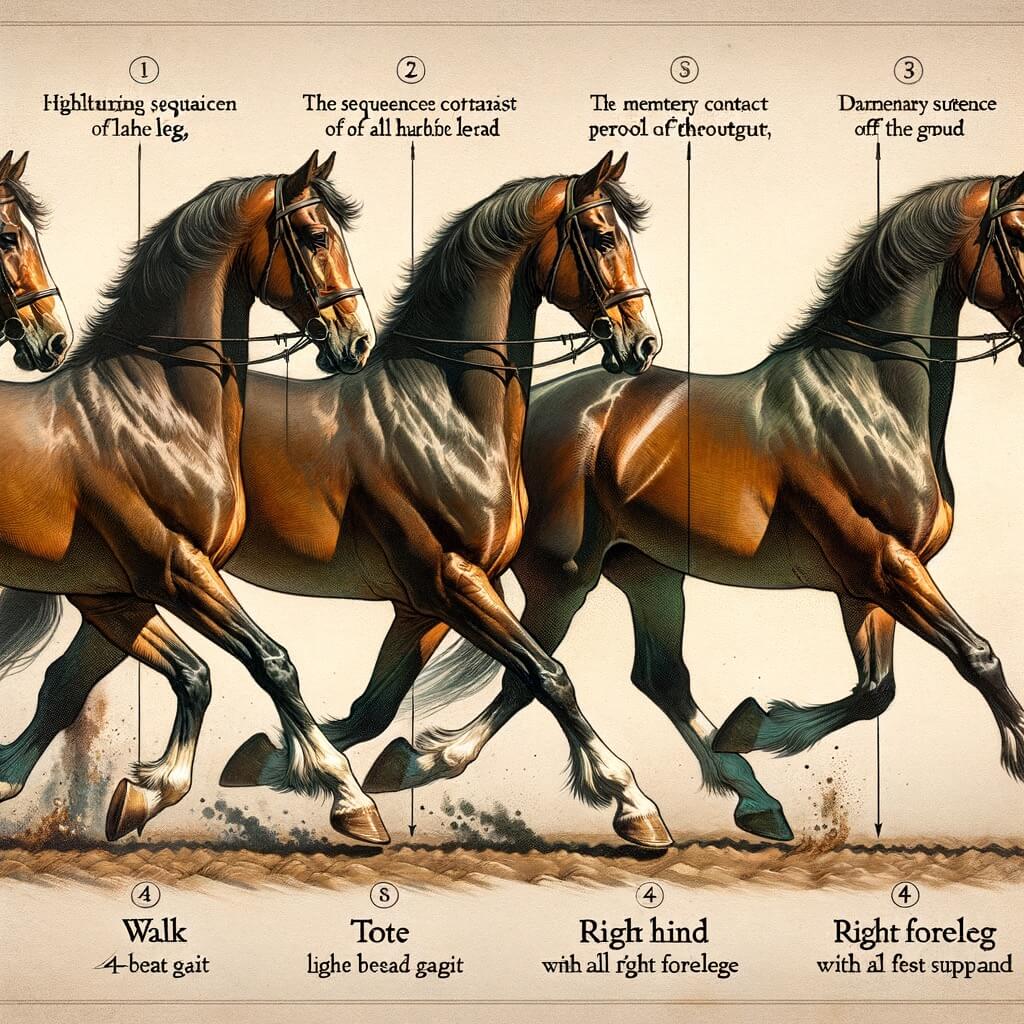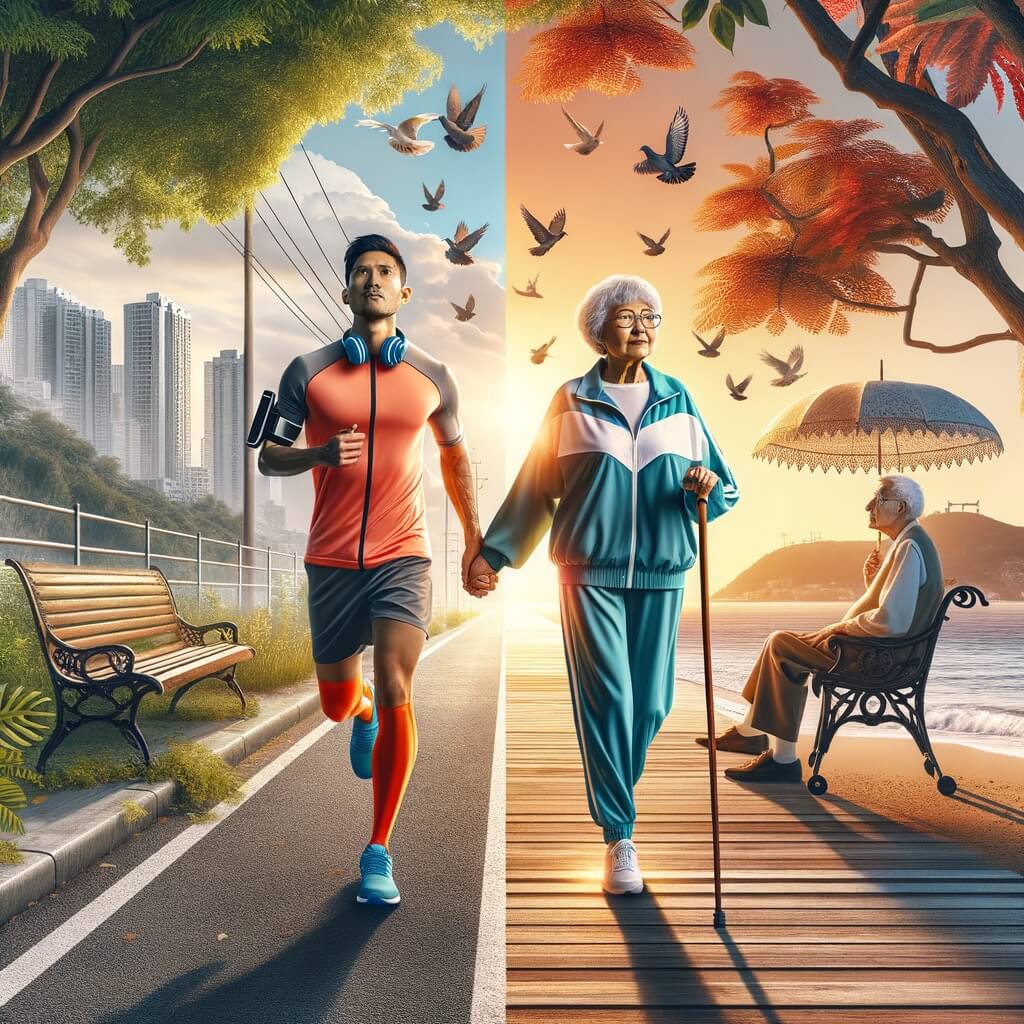Henry David Thoreau – “The moment my legs begin to move, my thoughts begin to flow.”
I was sitting in a hotel lobby, and I was wondering: “Why does everyone walk everywhere and not run?” I started thinking and this is what I realised.
Why do people usually walk instead of run?
People generally choose to walk rather than run for everyday transportation due to several practical reasons:
- Energy Efficiency: Walking requires less energy than running, making it a more sustainable activity for longer distances or when moving throughout the day. It allows people to maintain activity without becoming overly fatigued.
- Comfort and Convenience: Walking is typically more comfortable and less physically demanding than running. It doesn’t require special attire or preparation, and it’s easier to maintain a conversation, carry things, or navigate crowded areas while walking.
- Safety: Walking poses a lower risk of injury compared to running. The impact on joints like ankles, knees, and hips is significantly less when walking, reducing the risk of strain injuries and other physical issues.
- Social Norms: Social conventions and norms generally favor walking as a mode of public transportation in urban environments. Running can be seen as disruptive or unusual in many social contexts, especially in crowded or formal settings.
- Sweat and Physical Exertion: Running increases body temperature and leads to sweating, which might not be desirable for many daily activities, especially those involving social interaction or professional settings.
- Precision and Control: Walking provides more control over movement, making it easier to navigate tight spaces, slow down, stop for obstacles, or change direction quickly, which is particularly important in urban or crowded environments.
While running is a faster way to travel short distances, the combination of these factors generally makes walking the preferred mode of movement for everyday tasks and activities.
Now it got me thinking on what is the best method of exercise?
Because running feels like it should be better exercise, but it’s harder to sustain.
It’s also quite frustrating when you run a lot and don’t lose weight, because you are eating more.
You can run for 30 minutes, but if you eat an extra bowl of rice, you’re not going to lose weight.
Yes it has health benefits such as for your cardiovascular system, it gets the blood pumping, but if you eat more, you’re not losing weight.
So it all comes down to energy expenditure.
Which is the better method of exercise?
The energy usage for walking versus running varies based on several factors including the individual’s weight, pace, and efficiency of movement. However, on average:
- Walking:
- Energy Expenditure: It typically requires about 0.75 calories per kilogram of body weight per kilometer. This means a 70 kg person would burn approximately 52.5 calories per kilometer when walking at a moderate pace.
- Running:
- Energy Expenditure: Running generally uses about 1 calorie per kilogram of body weight per kilometer. For the same 70 kg person, running would burn about 70 calories per kilometer.
These figures suggest that running burns more calories per kilometer than walking, primarily because it requires more effort due to higher intensity and greater muscle activation. The actual energy expenditure can vary widely depending on the person’s fitness level, running or walking efficiency, and environmental conditions.
Walking is Much Easier:
10,000 Steps Walking is Easier than 7,500 steps running
The difference in total energy expenditure between running and walking isn’t tremendously large when adjusted for time, and there are several practical reasons why many people might find walking to be a more sustainable and comfortable option for regular exercise:
- Lower Impact: Walking is much gentler on the joints than running, which can significantly reduce the risk of injury. This makes it more suitable for longer durations, especially for those with joint concerns or who are overweight.
- Sustainability: Because walking is less strenuous, it’s easier to maintain over longer periods and integrate into daily routines. For example, incorporating walks into commutes, lunch breaks, or evening routines can be more feasible than finding time to run.
- Accessibility: Walking requires no special equipment and can be done almost anywhere. This convenience makes it a highly accessible form of exercise for most people, regardless of fitness level.
- Psychological Benefits: Walking, especially in pleasant environments like parks or nature trails, can be very relaxing and offer mental health benefits that intense exercise like running might not provide. The lower intensity allows for socializing, enjoying scenery, or even multitasking like listening to audiobooks or podcasts.
- Consistent Habit Formation: Because walking is perceived as less daunting, people might be more likely to stick with it consistently compared to running, which can sometimes feel like a chore. Consistency is key in any exercise regimen.
While running does burn more calories per minute, walking can often be more sustainable for daily activity, making it easier to accumulate calorie burn throughout the day. Additionally, for those aiming to increase their physical activity without high intensity or impact, walking provides a valuable option that balances calorie expenditure with ease and enjoyment.
Running Becomes Easier Through Time
With consistent training and proper conditioning, running can eventually feel as easy as walking for many people. This process involves gradually improving your cardiovascular fitness, muscular endurance, and overall running efficiency. Here’s how that progression typically works:
- Adaptation: When you start running regularly, your body begins to adapt to the new physical demands. Your heart becomes more efficient at pumping blood, your muscles adapt to handle more stress, and your respiratory system becomes better at managing increased oxygen needs.
- Increased Efficiency: Over time, as you continue to train, your body becomes more efficient at using energy. Your running form improves, which reduces the effort needed for each stride. This means you can run faster or longer with less perceived effort.
- Endurance Building: Regular running increases your stamina. Initially, what might have seemed like a challenging run becomes easier, and you can maintain a steady pace without becoming overly fatigued.
- Mental Adaptation: Alongside physical changes, regular runners often experience mental adaptations. The mental toughness required to push through longer or more intense runs develops gradually, and what once felt difficult becomes more psychologically manageable.
- Habituation: Running frequently makes it part of your routine, normalizing it as a regular activity. Just as walking doesn’t require conscious effort or motivation once it’s a habit, running can reach a similar state.
How to Make Running Feel Easier:
- Consistent Training: Follow a regular running schedule that gradually increases in intensity and duration. This helps build endurance and efficiency without causing burnout or injury.
- Proper Progression: Increase your running workload gradually using principles like the 10% rule, where you increase your running distance or time by no more than 10% per week.
- Recovery: Allow adequate recovery time between runs to let your body heal and strengthen. This includes getting enough sleep, eating a balanced diet, and incorporating rest days or lighter exercise days into your routine.
- Cross-Training: Engage in other forms of exercise to improve overall fitness and reduce the risk of overuse injuries. Activities like swimming, cycling, and strength training can enhance your running performance.
- Mindset and Motivation: Keep your running enjoyable. Mix up your routes, listen to music, run with friends, or set personal goals to keep the experience fresh and motivating.
As these elements come together, many people find that running becomes a natural and enjoyable part of their lives, much like walking. However, individual experiences will vary based on factors like fitness level, health conditions, and personal preferences.
Interesting Thought: Horses

Horses: Gaits for Every Speed
Horses are quadrupedal (four-legged), giving them far more variation in movement. Their main gaits include:
- Walk: A four-beat gait where the feet move in the sequence: left hind, left fore, right hind, right fore. Always at least one foot on the ground.
- Trot: A two-beat gait where diagonal pairs of legs move together (left hind & right fore, right hind & left fore). There’s a moment of suspension where all feet are off the ground.
- Canter: A three-beat gait viewed as a collected gallop. One hind leg, followed by a diagonal pair, then the remaining foreleg with a moment of suspension.
- Gallop: The fastest four-beat gait. Similar to the canter, but with a longer stride and extended suspension phase.
Horses Beyond the Basics
Some horse breeds exhibit additional specialized gaits:
- Rack: A flashy four-beat gait where each foot hits the ground individually (popular in Saddlebreds).
- Tölt: A smooth, four-beat gait where there’s always a foot on the ground (characteristic of Icelandic horses).
- Running Walk: A fast, four-beat gait where the hind foot oversteps the front (seen in Tennessee Walking Horses).
Energy Efficiency: Gait Matters
The most energy-efficient gait for a horse depends on the speed they need to travel. The slower, the more energy efficient.
- Walk: Slowest, but most efficient for long distances.
- Trot: Provides a good balance of speed and energy use.
- Canter: More energy-intensive than walking or trotting but less than a gallop.
- Gallop: The fastest but also the most energy-consuming gait.
Related Quotes
Henry David Thoreau – “The moment my legs begin to move, my thoughts begin to flow.”
Friedrich Nietzsche – “All truly great thoughts are conceived by walking.”
Jean-Jacques Rousseau – “I can only meditate when I am walking. When I stop, I cease to think; my mind only works with my legs.”
Soren Kierkegaard – “Above all, do not lose your desire to walk. Every day I walk myself into a state of well-being and walk away from every illness; I have walked myself into my best thoughts.”
Mahatma Gandhi – “I believe that a man is the strongest soldier for daring to die unarmed with his hands in his pockets.”
Haruki Murakami – “I’ll be happy if running and I can grow old together.”
Michelle Obama – “Walking is a form of exercise that’s available to most people. You don’t need any special equipment, you don’t need a gym membership. All you need is to step out your front door and get moving.”
John Muir – “In every walk with nature, one receives far more than he seeks.”
Christopher McDougall – “The reason we race isn’t so much to beat each other… but to be with each other.”
Bill Bryson – “I can’t think of anything that brings me closer to tears than when a perfect symmetry like speed and stamina meet up with a beautiful piece of music and scenery. Running just makes me feel alive.”
Conclusion
So my conclusion from all this is that walking is actually much more healthy than you might think. Partly because it’s so easy.
We can sustain walking for large distances, and it doesn’t feel like effort.
But we can make running easier, through practice.
And running also has many benefits that you don’t get from walking.
But so does weightlifting.
Muscle has many benefits that you don’t get from running or walking.
So is stretching.
So it’s good to combine all these types of exercise together.
To be more active
But focus on the one that best suits your goals.
If you’d like to lose weight, then do more walking, and some weightlifting, and eat clean.
If you’d like to get healthier, then running might be better, and so is walking and weightlifting.
It’s also interesting to look at world champions of each sport and see what kind of physique they have.
Runners of long distance are super lean. Sprinters are more muscley.
Weightlifters don’t look right to me. Too bulky, and not flexible or fit.
It’s swimmers that I think have the best physique.
